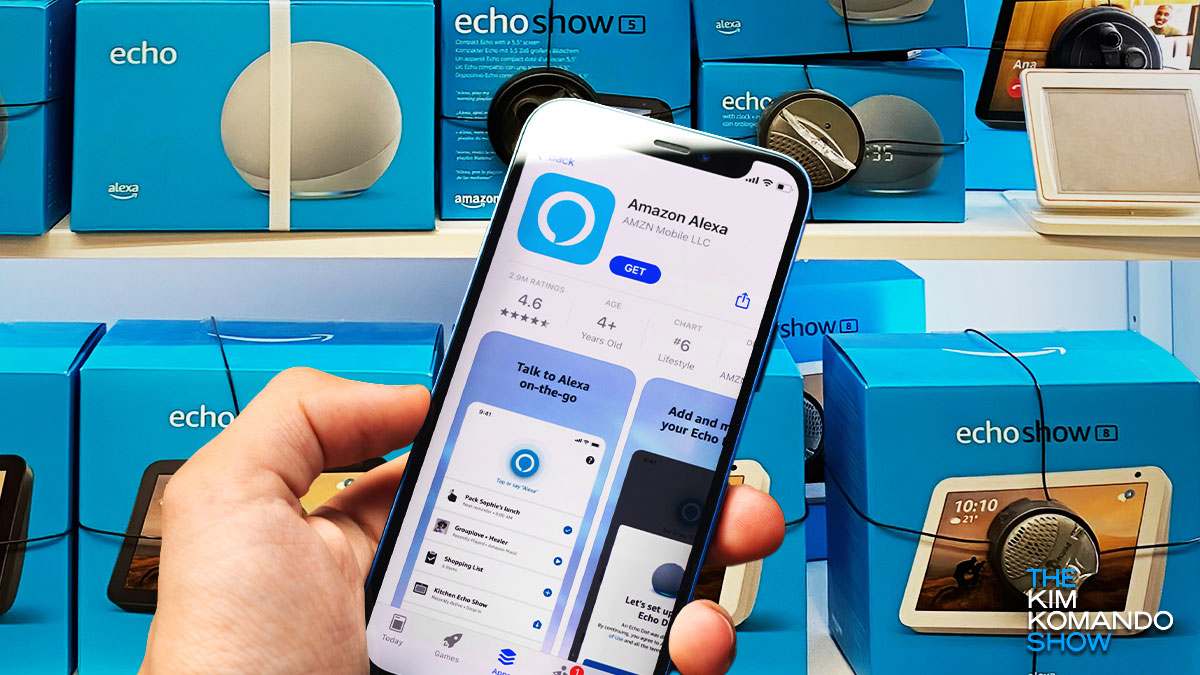Artificial intelligence doesn’t just power our smart assistants and high-tech gadgets. It has all kinds of applications, including the creation of beautiful, original art. This is a fascinating look at how this technology works, and we’re sure AI’s creativity will blow you away.
Elevate your home theater with these 5 great soundbars

Your home theater isn’t complete until you add those final touches — an LED light string behind your smart TV, blackout curtains and, of course, a fantastic soundbar.
There are tons of great soundbar options on the market right now, so how do you decide which is right for you? Tap or click to learn how to turn your spare bedroom into a home theater.
We found five superior soundbars to choose from. Whether you’re looking for something your smart assistant can help you control or a device that generates surround sound, we’ve got the perfect choices for you.
[content-egg-block template=custom/k3_best_products]
New Alexa features: Sound detection, refill medications and more

Smart assistants are there to make your life easier and more enjoyable. They can help you with simple tasks such as setting the thermostat or impressing your guests on movie night by setting the mood via lighting.
Amazon’s Alexa is built into all Echo devices and is compatible with numerous other smart devices. Though she’s one of the most popular smart assistants out here, Alexa isn’t perfect and does have her quirks. Tap or click here to check out how to solve five common Alexa problems.
Using AI to create art with a one-word prompt
Unbelievable gadgets coming soon
Think about just how much technology has shaped today’s world — from smart assistants in our homes to self-driving cars to powerful computers we carry around in our pockets, But what is the next tech frontier, and what will it look like for our everyday lives? I’ll walk you through the wild world of future tech.
Ship happens: Google’s shiny new AI assistant, Mariner, will take over Chrome to do stuff like book flights, fill out forms and do your shopping without you doing a thing. It can’t fill out credit card or billing info “for privacy reasons.” (Google actually had the gall to say that!) Watch the prototype in action here.
List: The very worst gifts you can give if you care about privacy

Anytime you go online or use a connected device, your privacy is at risk. This isn’t to say you should throw away all your tech and live in a cave, but there are ways to minimize exposure.
Let’s start with your choice of browser. This has a significant impact on your online experience. Many browsers share popular features like dark mode, but when it comes to privacy, you’ll find a greater distinction. Tap or click here for the best privacy-focused browsers, ranked.
📱 It’s like Siri went to college: The smart assistant now uses ChatGPT on the iPhone 15 Pro or any iPhone 16. If you grant permission, the iOS 18.2 update allows OpenAI’s GPT-4 to step in if Siri can’t help you. No ChatGPT account, free or paid, is needed. It’s kinda weird. I opened an email and it automatically generated a reply that was pretty damn good.
How to keep Alexa, Siri and your smartphone from uninvited listening
Our smart assistants are helpful, until we lose control and they start listening all the time and sharing unintended conversations. We need to turn off their eyes and ears all together! You’ll be surprised by the easy hack FBI members use! Click here to listen to my Consumer Tech Update as I share some tips to take the control back!